A Montréal borough envisioned the city of the future. Now they are building it, for residents and businesses.
Louis Langelier is a lecturer in the Department of Strategy, Social and Environmental Responsibility at the University of Quebec in Montreal (UQAM).
What does a sustainable city look like? What does it mean to live and work there?
Montreal’s largest borough or district, Rosemont – La Petite-Patrie, is answering that question. Borough leaders worked with the University of Montreal’s Prospective City Lab, where researchers envision the “city of tomorrow.”
“We did a foresight exercise called Prospective 2037,” recalled François Croteau, Mayor of Rosemont – La Petite-Patrie. “We wanted to make the borough more resilient, better able to face future health crises and climate change. “We said to ourselves: ‘What could the borough be like in 20 years?”
Rosemont’s work with the Lab began in 2017. In 2020, the ideas are already being put into place.
Seeing the Future City, Today
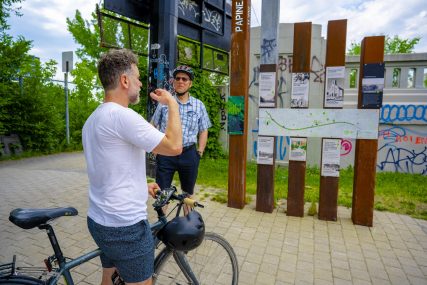
I toured Rosemont – La Petite-Patrie with Mayor Croteau on bikes, on a bright summer day in June. He showed me the core elements of the re-envisioned borough. These included
-
Sustainable urban planning, with “green and active living environments,” a network of bike paths, and local shops
- Citizen action, where people take the lead: e.g. in urban farming, green alleys, and art projects.
- Resource reduction efforts, from white roof requirements to zero waste goals
These will help Rosemont – La Petite-Patrie adapt to many social, economic and technological changes, from an aging population to changing lifestyles.
Come along on our ride.
Sustainable Urban Planning
The future vision for Rosemont – La Petite-Patrie is to “live, work and play” within 500 meters, explained Croteau. Different approaches make that possible.
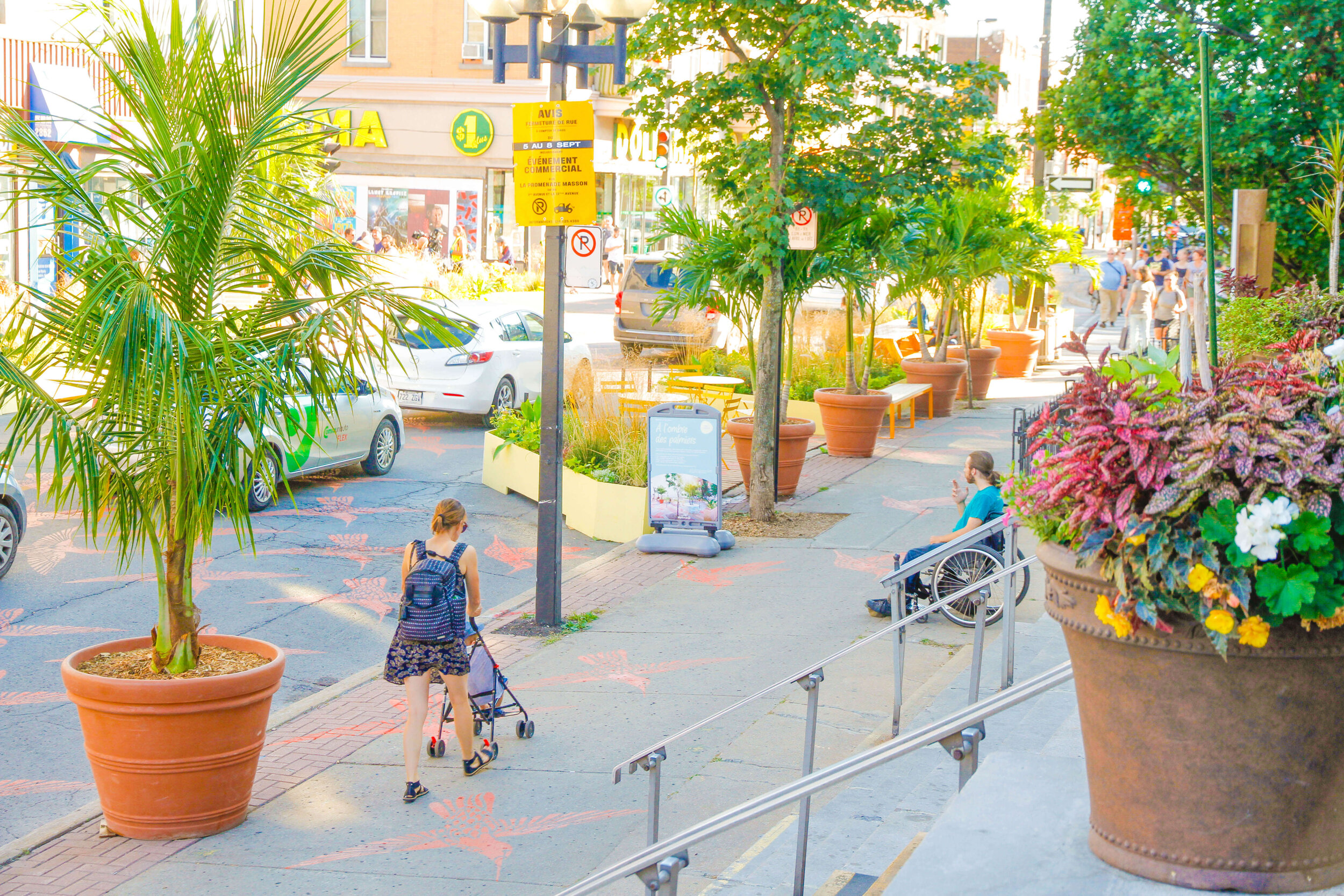
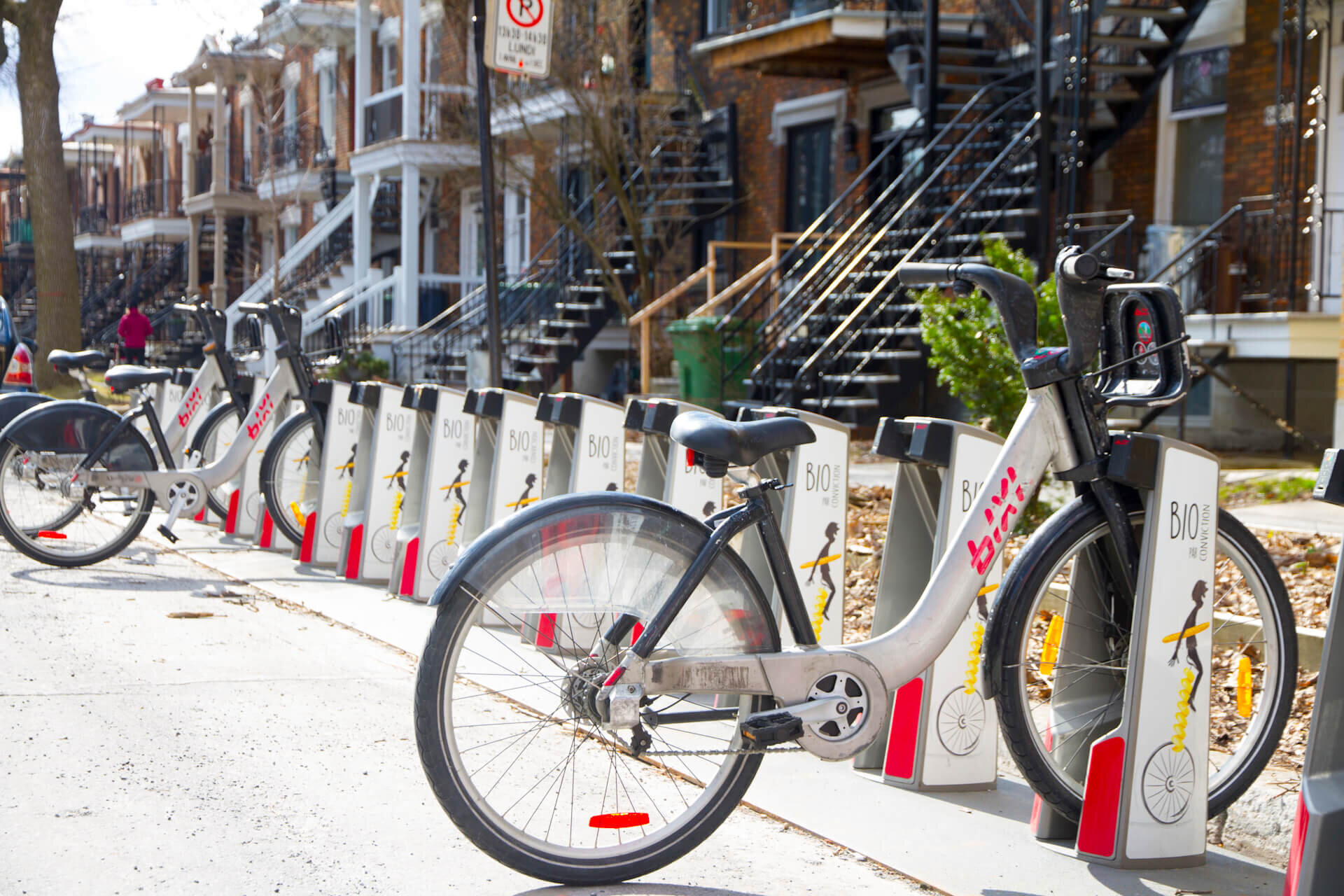
People can easily access work and home by walking or biking.
“Green and active living environments” are areas surrounded by busy streets. Within these areas, people should be able to conduct their daily activities: traveling to school, shops, recreation centers, or the workplace – all within 500 meters.
“The idea is to work on mobility, calming traffic, safety and user-friendliness of travel, but also on urban planning that allows services to be nearby,” said Croteau.
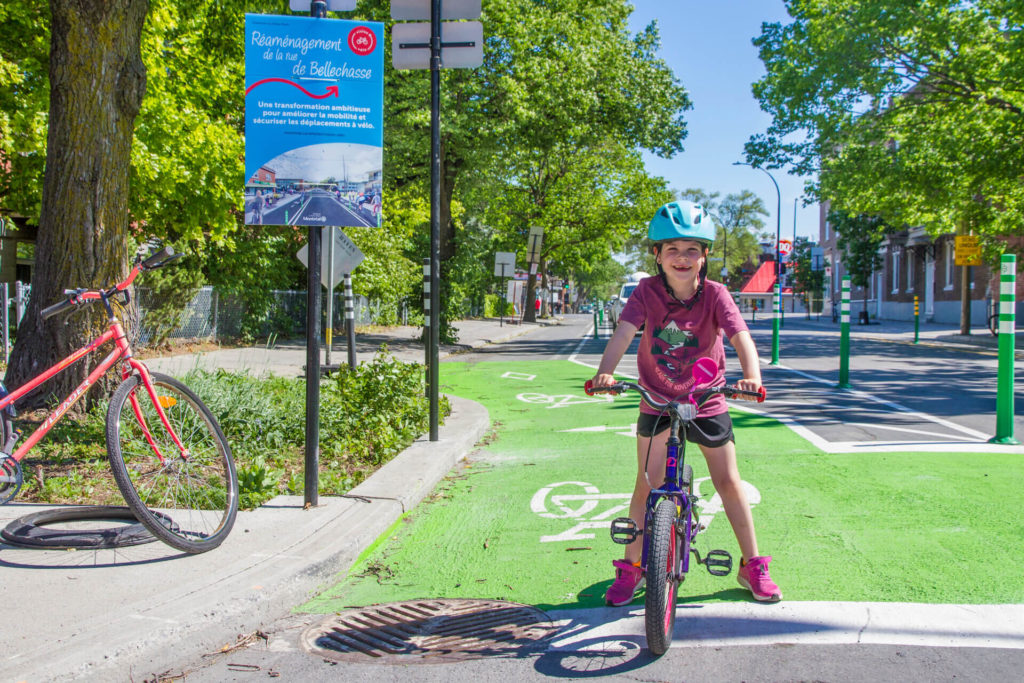

Bike networks make it possible for everyone to travel and feel safe doing so.
Bike networks make it possible for everyone to travel and feel safe doing so.
Bike paths enable travel within and across super blocks. Rosemont – La Petite-Patrie’s is adding 65 km of bike lines to the 90 km already in place. Families are embracing the changes, but so are workers.
In a developing industrial area, Croteau noted, “local employers saw that their employees are increasingly coming by bicycle, so they asked us to develop cycle paths and BIXI (bike rental) stations.”
Fewer cars mean a stronger local economy, Croteau said. “Car-related expenses reduce household consumption on other items. Additionally, shoppers on bicycles or foot spend more. According to a recent study, businesses on pedestrian streets have higher value.”
Local shops further reduce the need to travel. The borough requires new buildings to have shops or other commerce on the ground floor. “It’s the whole idea of [being able to live within] 500 meters again,” said Croteau.
Citizen Action
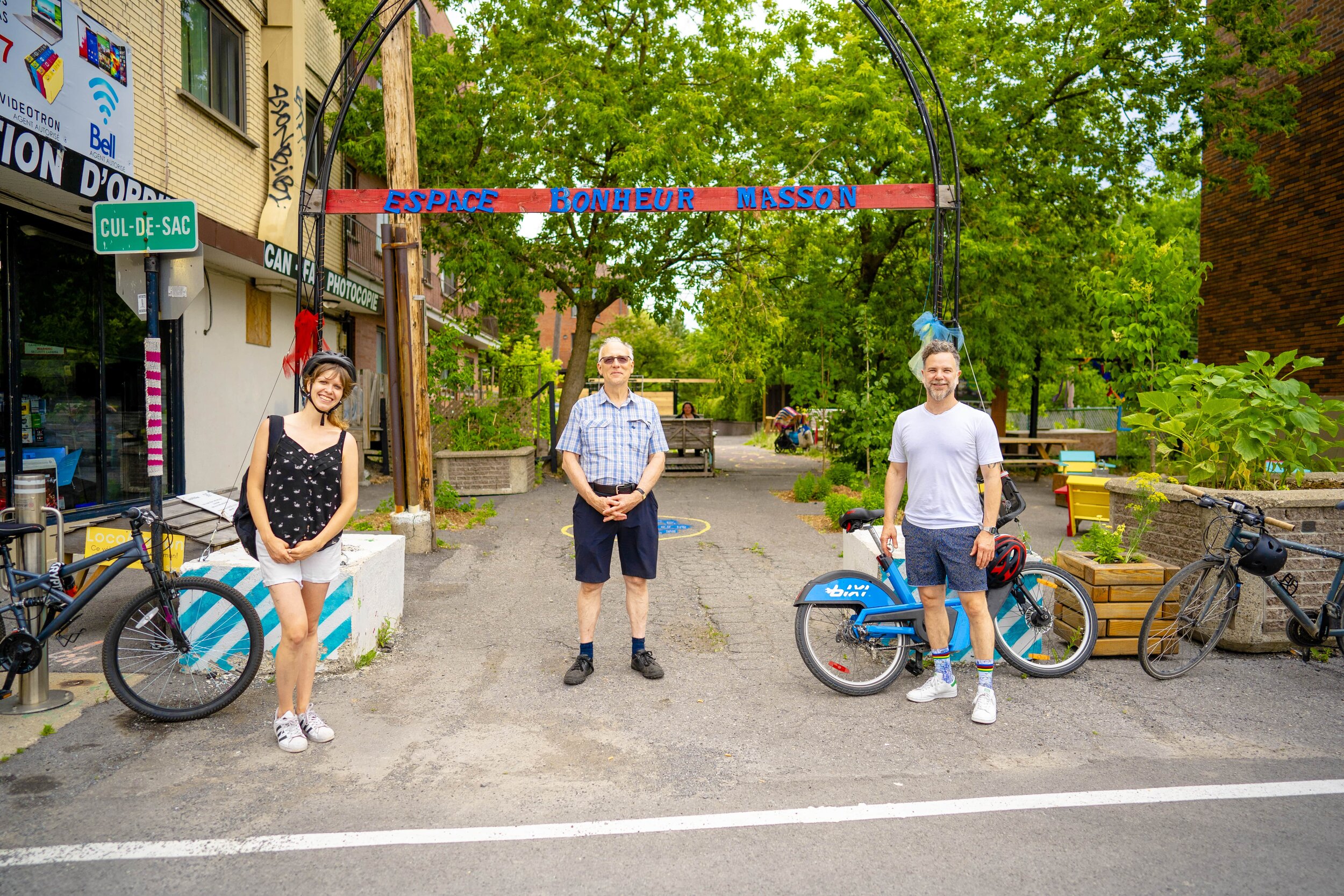
A citizen committee reinvented an abandoned lot, “Espace Bonheur Masson”
“I often remind people that in public space, the most important word to remember is the word public,” said Croteau. “It is not a private space and we tend to forget that it belongs to the citizens.”
When people don’t feel engaged in their community, they lose interest, Croteau explained. “Our principle is: as long as it’s safe and it doesn’t harm anyone, we let people do pretty much whatever they want without permission.”
That approach results in thriving green alleys, community art, and widespread planting.
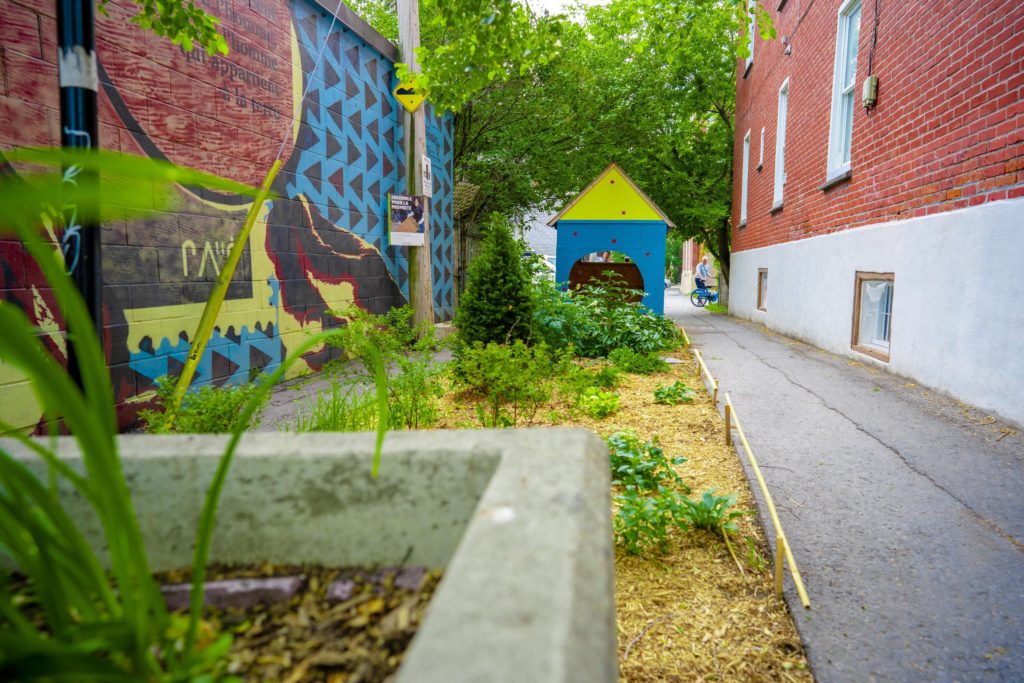
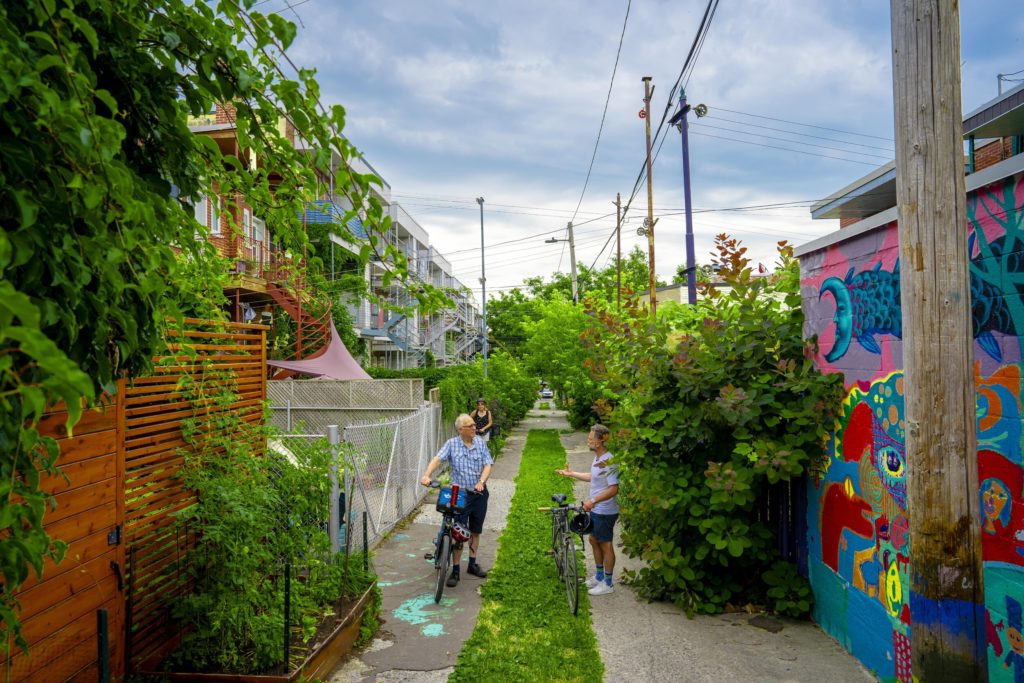
Green alleys behind buildings feature murals, playgrounds, and gardens.
Green alleys behind buildings feature murals, playgrounds, and gardens.
Green alleys brighten the spaces behind houses in the borough. The green spaces cool the city, connect neighbors, and provide natural habitat. Murals represent “the spirit of the alley.”
“The green alleys have their own Facebook page,” noted Croteau. “There is a competition between each of them to make sure to be the most beautiful of the green alleys!”
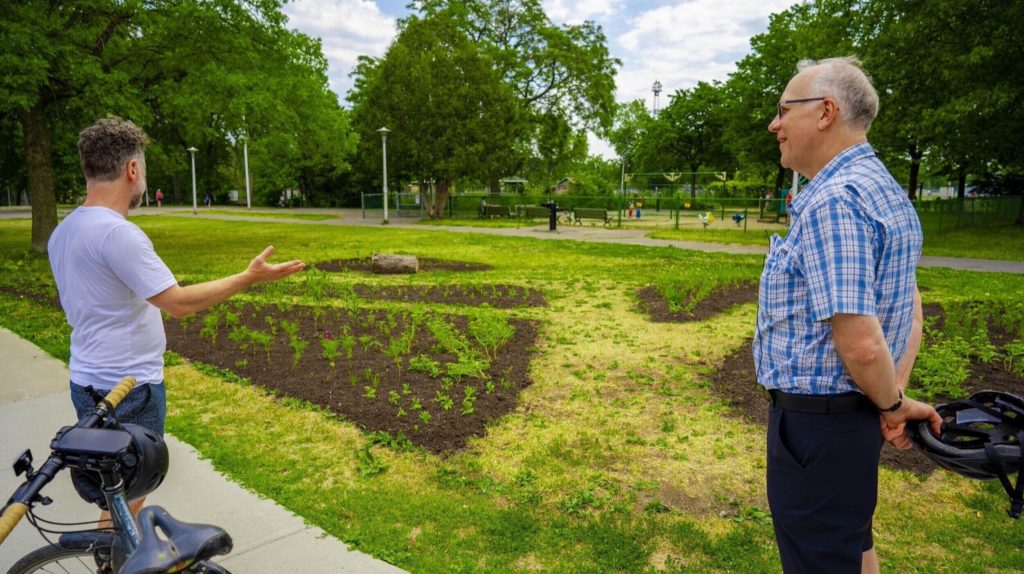
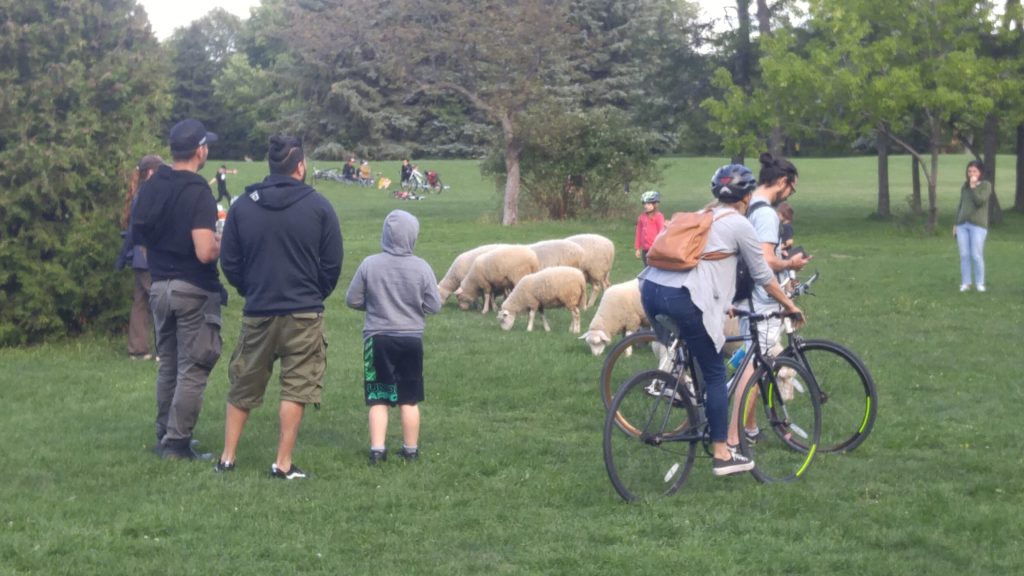
Citizens turn park space into plantings; sheep help trim the grass in Maisonneuve Park.
Urban agriculture goes beyond community gardens. In Rosemont – La Petite-Patrie, citizens can even turn park space into plantings.
“We allow people to plant everywhere, essentially,” explained Croteau. “Of course, it can’t be too tall – no corn and sunflowers.”
Bringing agriculture to the city is a throwback to an earlier time, Croteau noted. “When people first developed Montreal, central boulevards were filled with vegetable gardens. Farm animals were allowed in Montreal until 1967. If we hadn’t abandoned these practices, Montreal would probably be better adapted and more resilient than it is.”
Resource Reduction
Anything you can do, can be done better. Rosemont – La Petite-Patrie finds ways to improve everything from roofs to restaurants.
Rooftops
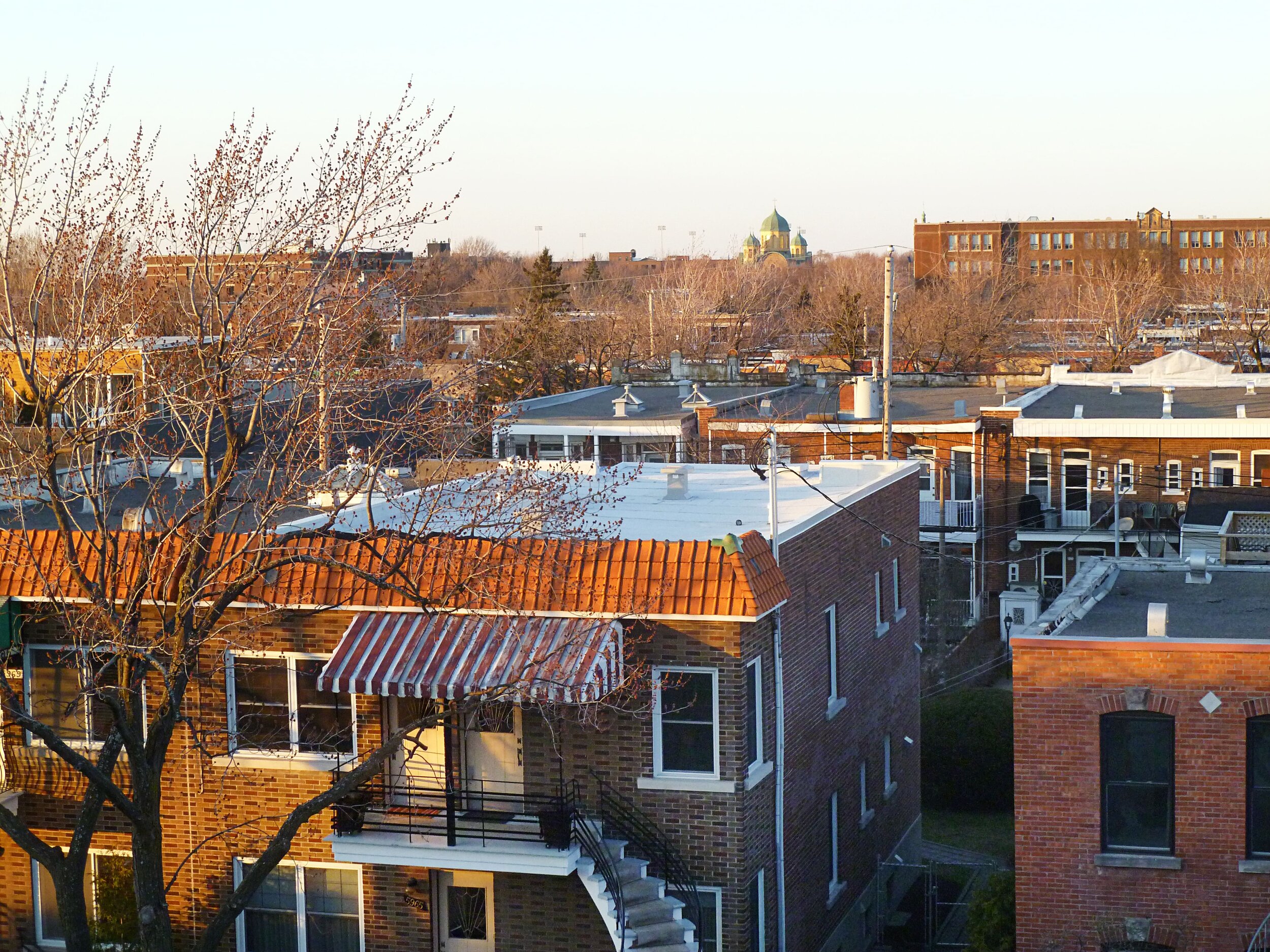
White roofs reflect sunlight.
White roofs reduce “heat islands,” by reflecting sunlight and trapping less. Real estate projects in Rosemont must use white roofs, as well as maintaining green space and planting trees. « So, rather than having a project that creates an island of heat, we systematically create an island of freshness,” said Croteau.

Zero waste is a community activity.
Zero waste is a goal in process. “It’s an approach that is collective,” said Croteau, with actions undertaken citizens, city government, and businesses.
The strategy relies in part on individual assistance or coaching. Volunteers teach households techniques to reduce waste at source. Environmental group Jour de la Terre works with cafes, bakeries and restaurants, providing similiar personalized guidance.
In 2020, households have reduced waste by 50-60% and the government by 90%. Benefits are environmental and economic. “Landfilling and processing my residual materials are a significant cost,” said Croteau.
Benefits of Living in the Future
People enjoy living in this reimagined city. Croteau cites an increase in population and in property values. With green alleys, for example, “there is a sharp increase in property assessments where precisely this type of development occurs.”
The borough’s goals are not just economic, he added. “The goal is to improve the quality of life. After that, it’s to make sure to maintain a social mix in these environments so that the less privileged people continue to benefit from these spaces, that they do not find themselves only in the least well-equipped and less favorable places.”
Could It Happen Anywhere?
Montreal’s governance system facilitates innovation within the city. The central government controls basic services: police, fire, water supply, major infrastructure. But boroughs have great freedom with local projects; they’re responsible for local roads, parks, culture, and urban planning. “Like provinces, we have our own power and identity.”
They can have resources to match. In developing the bike routes, three employees worked full time on planning and surveying, Croteau noted. « We are the only borough to have that and in terms of budget and population proportions, it is also more than the City of Montreal. So, that’s why we are able to arrive with such a structured and planned network.”
Lasting leadership may also make a difference. Croteau is in his third term as mayor. In office since 2009, he feels closely connected to the priorities of the borough. “We follow the rhythm,” he explained. “We keep pace with the population. There have never been any major crises with our projects since the start of my first term. Essentially because I think we are in line, we feel the pulse, a lot of the population, then we inform a lot in advance.”
Riding into the Future
It’s a wonderful thing to travel through an area with such a passionate advocate as Mayor Croteau. He invites us all to “move to Rosemont-La-Petite-Patrie, and to become Rosepatrien as they say.” Certainly, we can work to adopt some of their innovations, wherever we live.
Find out More
Enjoy audio from our conversation, and additional pictures, on our Francophone site, Réseau entreprise et développement durable.


Add a Comment
This site uses User Verification plugin to reduce spam. See how your comment data is processed.This site uses User Verification plugin to reduce spam. See how your comment data is processed.